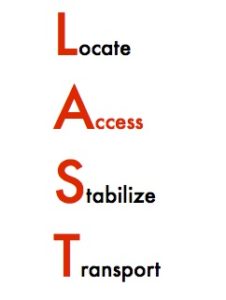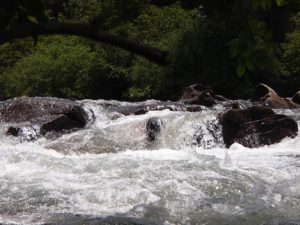If we were to look at the total time spent in a river rescue, then divide the amount of time spent of each part of the rescue: Locate, Access, Stabilize, Transport we would find that a majority of time spent in a rescue is in the access phase.
Access is one of the most limiting factors that affect rescues. If you cannot access the victim you will be incapable of giving any aid. Having knowledge and practice of the various types of access is one of the fundamental pillars of an efficient rescue team. What is most important is understanding what your team is capable of and what equipment needs those capabilites may dictate. A group of rafters’ rescue equipment needs and and space available to store them likely will be larger than a small group of kayakers. On the flip side, a professional rescue team (EMS) will have much more equipment/hardware but a lot less practice and experience in the water. Every group has its challenges and limitations to being able to access a victim, but each group also has its benefits and special skills that can help. The key is practicing scenarios to discover what your group’s deficiencies and special skills are, then working out a plan to overcome them.
What can you specifically practice?
Boat access: can you get out of your kayak onto a rock from the eddy behind it if you cant touch the bottom of the river? Could you catch that same eddy if you were in a raft, or could you swim to access that eddy if you didn’t have a boat at all?
Downstream safety/rescuer reset: do you have the tools in place to retrieve your swimmer/kayaker/rafter if they miss that rock and reset the rescue for a second attempt?
Preplan/plan B: can you implement or plan a secondary plan of action in case your initial access plan fails?
Taking the time as a paddling group or as a department to learn and discover skills, abilities, and limitations in the water can go a LONG way to causing a successful rescue.


